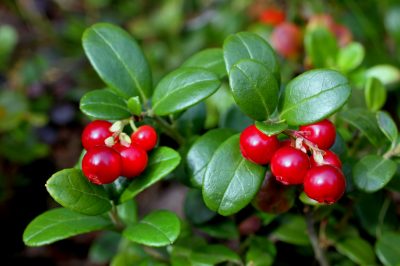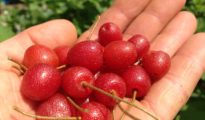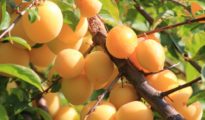Lingonberries are very popular in Scandinavian culture, but they're not very known in most parts of North America. So what are lingonberries exactly? Also referred to as cowberries, mountain or lowbush cranberries, red bilberries, or whortleberries, lingonberries are basically equivalent with the North American cranberry fruit. Lingonberries taste AND look like cranberries, and therefore, are used often in the same way cranberries are used: in sauces, as stuffings, juices, and much more! If you're interested in learning more about how to grow lingonberries in your garden, keep reading below!
How to Grow Lingonberries

Lingonberries are usually found in the wild in Sweden, most often than not in woodland areas and moorlands. Like with cranberries, lingonberries are very bitter when eaten raw, but when mixed with sugar or cooked, are completely transformed!
Lingonberries produce fruit twice a year – once in the spring and once in late summer or early fall. Be patient though, as a lingonberry shrub will take 2-3 years to start producing any fruit.
So how to grow lingonberries?
Planting Lingonberries:
- Plant lingonberries in rich, organic soil with a pH of 5.0.
- Lingonberries do well in the shade, as well as in the sun.
- Plant in the spring after all danger of frost has passed.
- Dig a hole that is a little deeper than the root ball and make sure it is wide enough to allow for its roots to spread.
- Water the plants well after planting and apply 2-3 inches of sawdust or peat moss around the plant.
- If growing multiple plants, space them 14-18 inches apart and in rows that are set 3-4 feet apart.
- After a few years, the plants will create a low, evergreen hedge.
- If you don't have much space in your garden, you can also grow lingonberries in pots or containers as long as you apply a thick layer of mulch in the winter.
Lingonberry Care:
- Lingonberries need consistent irrigation – at least 1 inch of water per week.
- Keep the area weed free as lingonberry plants do not like to compete with other plants.
- Lingonberries don't really require any fertilizer, but if you do notice slow growth, feed them with a low nitrogen fertilizer, 5-10-10, or compost.
- Prune every 2-3 years to encourage growth and increase fruit yield.
Like this post? Share and Pin 🙂



















